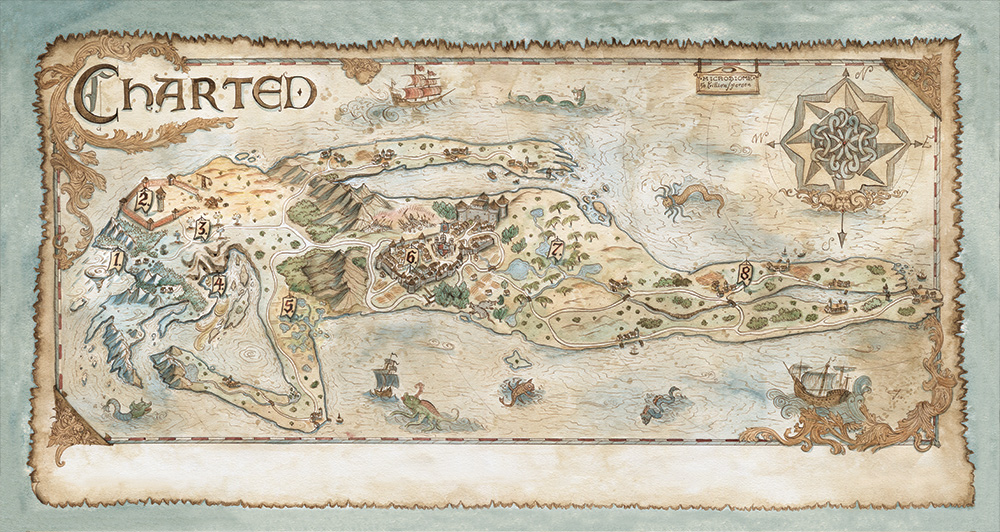

They camp out on skin, hide between teeth, dwell in stomachs, and make us all stink. Meet your microbiome: the bacteria, fungi, and viruses that inhabit Planet You. Up to 50 trillion tiny beings occupy the average body—outnumbering the 30 trillion or so indigenous human cells in and on your person. And just like flora and fauna have divvied up Earth, different microbial groups inhabit various regions of our bodies. From topknot to toenail, they form entire ecosystems that keep their world (that’s us) healthy, or make it terribly sick. Here are some of the groups we host, from noble knights to villainous scum. 1. Snowy Scalp Up north, a wild clan of fungi sometimes makes a living in the snowy tresses on your head. Malassezia eat the oils on your scalp, then spit out something called oleic acid. It can dry out your skin, creating a dandruff blizzard.
2. The Heady Desert
Most researchers agree that healthy noggins are (basically) barren of bugs. The blood-brain barrier, a powerful membrane, typically allows only beneficial molecules entrance. But conniving microbial spies—including Streptococcus pneumoniae, the culprit behind meningitis—can weaken this wall, sneak through, and interrupt brain function.
3. Facial Grassland
Mischievous critters Propionibacterium acnes live on every face and love inciting chaos. When hair follicles get clogged with dirt, dead skin, and an oily substance called sebum, P. acnes chow down, inflaming the area. Voilà: You’ve got a zit.
4. The Cliffs of Maw
Greedy little spelunkers Streptococcus mutans climb into the crevices in and between teeth, secreting enamel-eroding acids. This microbial mining causes cavities—unless first smote by the many-bristled god.
Bad breath? Blame the Solobacterium moorei lurking on your tongue and in your saliva. It turns proteins into sulfur compounds, cursing humans with halitosis.
5. The Boggy Pits
Armpits are a microbial hot spot because they are balmy and humid. Staphylococcus hominis are especially fond of this swampland, where they sip on sweat and leave behind new molecules with a special stink: BO.
6. Gut City
The noble brotherhood of Bacteroides fragilis swears an oath to protect you. Molecules clinging to the microbes’ armor can help orchestrate and control immune responses. Meanwhile, scavenging street urchins called Bacteroides thetaiotaomicron flit through the intestinal city snacking on plant bits our tummies can’t handle, enabling the gut to pick up more nutrients. Oxalobacter formigenes act like street sweepers, cleaning biological byways of compounds that can cause kidney stones.
Bifidobacterium longum are hardy townies that keep the colon in working order: They help break down carbs and keep you regular. They also help ward off other, more harmful strains—and use up enough resources to keep colonizers such as the diarrhea-inducing Clostridium difficile from getting a foothold.
Not every flavor of Escherichia coli (street name E. coli) makes you sick. Many varieties occupy our gastro metro as productive citizens. Aside from digesting food, they also synthesize vitamins B and K, which we then absorb.
7. Vaginal Oasis
Genitals are a haven for microbes, which often thrive in warm, moist conditions. Some Lactobacillus species— crispatus, gasseri, iners, jensenii, and more—tend this garden by producing lactic acid, which regulates local pH and keeps out pathogens. These locals also serve as a newborn’s first microbiome.
Alas, penile bugs and their biological purpose remain more mysterious to researchers.
8. Hamlets of Derma
Skin-dwellers Staphylococcus epidermidis, lugdunensis, and capitis are tribes that, for the most part, just take up space. Thankfully, they don’t welcome outsiders like Staph. aureus, which can cause infections and pneumonia in hosts.
This article was originally published in the Fall 2018 Tiny issue of Popular Science.
